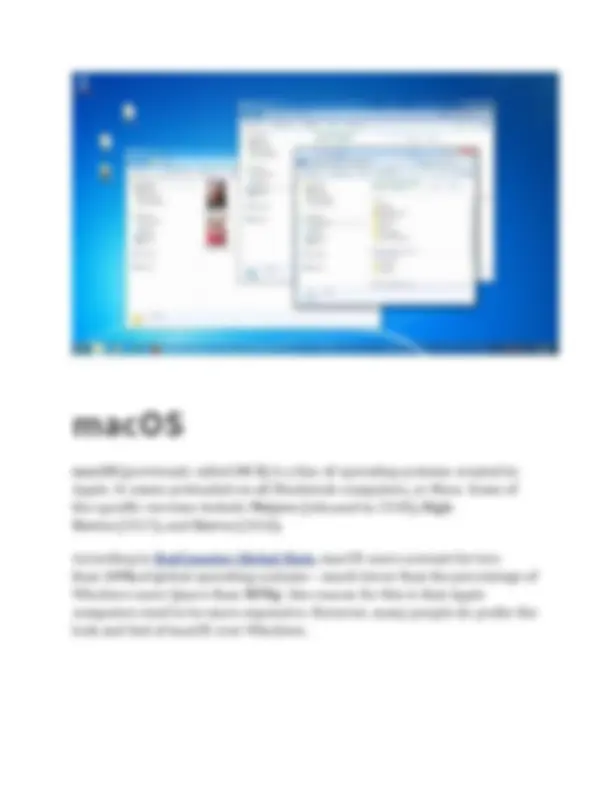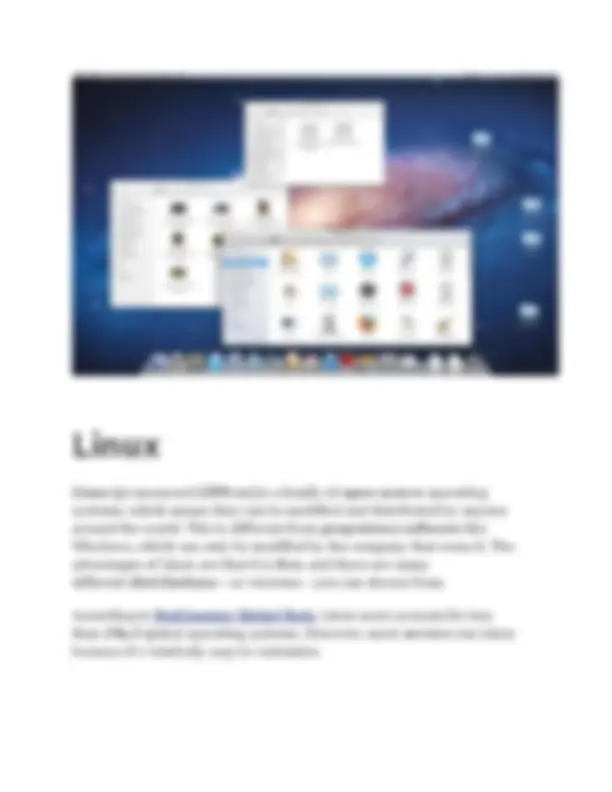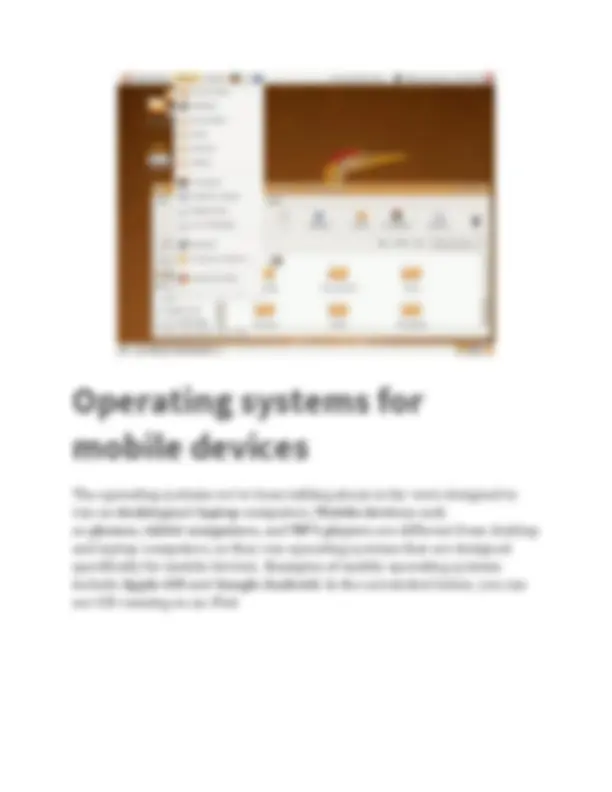








Study with the several resources on Docsity

Earn points by helping other students or get them with a premium plan


Prepare for your exams
Study with the several resources on Docsity

Earn points to download
Earn points by helping other students or get them with a premium plan
Community
Ask the community for help and clear up your study doubts
Discover the best universities in your country according to Docsity users
Free resources
Download our free guides on studying techniques, anxiety management strategies, and thesis advice from Docsity tutors
An overview of operating systems and applications, explaining their roles and functions in computing. It covers the importance of operating systems, their types such as Windows, macOS, and Linux, and the differences between desktop and mobile operating systems. The document also introduces applications, their types, and the distinction between desktop applications and mobile apps. It concludes with a brief discussion on installing new applications.
What you will learn
Typology: Study notes
1 / 10

This page cannot be seen from the preview
Don't miss anything!







An operating system is the most important software that runs on a computer. It manages the computer's memory and processes , as well as all of its software and hardware. It also allows you to communicate with the computer without knowing how to speak the computer's language. Without an operating system, a computer is useless.
Your computer's operating system ( OS ) manages all of the software and hardware on the computer. Most of the time, there are several different computer programs running at the same time, and they all need to access your computer's central processing unit (CPU) , memory , and storage. The operating system coordinates all of this to make sure each program gets what it needs.
Operating systems usually come pre-loaded on any computer you buy. Most people use the operating system that comes with their computer, but it's possible to upgrade or even change operating systems. The three most common operating systems for personal computers are Microsoft Windows , macOS , and Linux. Modern operating systems use a graphical user interface , or GUI (pronounced gooey ). A GUI lets you use your mouse to click icons , buttons , and menus , and everything is clearly displayed on the screen using a combination of graphics and text.
Each operating system's GUI has a different look and feel, so if you switch to a different operating system it may seem unfamiliar at first. However, modern operating systems are designed to be easy to use , and most of the basic principles are the same.
Microsoft created the Windows operating system in the mid-1980s. There have been many different versions of Windows, but the most recent ones are Windows 10 (released in 2015), Windows 8 (2012), Windows 7 (2009), and Windows Vista (2007). Windows comes pre-loaded on most new PCs, which helps to make it the most popular operating system in the world.
Linux (pronounced LINN-ux ) is a family of open-source operating systems, which means they can be modified and distributed by anyone around the world. This is different from proprietary software like Windows, which can only be modified by the company that owns it. The advantages of Linux are that it is free , and there are many different distributions —or versions—you can choose from. According to StatCounter Global Stats , Linux users account for less than 2% of global operating systems. However, most servers run Linux because it's relatively easy to customize.
The operating systems we've been talking about so far were designed to run on desktop and laptop computers. Mobile devices such as phones , tablet computers , and MP3 players are different from desktop and laptop computers, so they run operating systems that are designed specifically for mobile devices. Examples of mobile operating systems include Apple iOS and Google Android. In the screenshot below, you can see iOS running on an iPad.
When you open an application, it runs inside the operating system until you close it. Most of the time, you will have more than one application open at the same time, which is known as multi-tasking. Watch the video below to learn more about applications. App is a common term for an application , especially for simple applications that can be downloaded inexpensively or even for free. Many apps are also available for mobile devices and even some TVs.
There are countless desktop applications, and they fall into several categories. Some are more full featured (like Microsoft Word ), while others may only do one or two things (like a clock or calendar app). Below are just a few types of applications you might use.
Every computer and mobile device will come with some applications already built in, such as a web browser and media player. However, you can also purchase and install new apps to add more functionality.